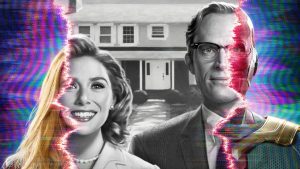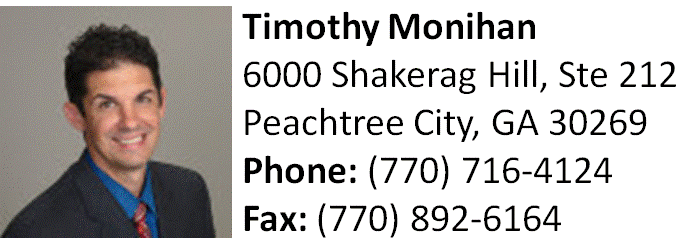January 21, 2022
- “What If…?”
Even though I ranked this last, I will start off on a positive note. I can and do appreciate “What If…?” for its artistic and cartoon style. It also gave Marvel the opportunity to highlight the number of infinite possibilities out there and gave fans more of an insight into the multiverse.
However, the show just was not captivating enough for me. After all of the action in “Black Widow,” “WandaVision,” and “The Falcon and the Winter Soldier,” action that I was following very intently, it felt like a strange deviation from the normal storyline. “What If…?” did not really carry the ongoing plotlines that were developing throughout Phase Four. Instead, it felt like a sidebar to show what else could possibly happen.
Another thing that probably contributed to my dislike of the show was the different versions they showcased. They just didn’t appeal to me. For instance, episode 1 focused on what would have happened if Peggy Carter became Captain America and episode 2 was all about what would have happened if T’Challa became StarLord. Honestly I found those episodes boring and they didn’t add anything interesting to the ongoing Marvel plot.
Marvel had such a good storyline that was developing extremely well and, once they added the show “What If…?” in, it felt like a weird sort of time jump. I do give Marvel credit for branching out with their style of introducing content to fans but unfortunately, “What If…?” did not hit the mark for me.
- “Hawkeye”
I have always thought Clint Barton never really got much recognition in the early stages of his introduction to the Marvel Cinematic Universe. “Hawkeye” was a fantastic show to showcase Clint’s true talents and even delve deeper into who Clint Barton is as a person.
The audience was able to see Barton balance a family life with life as a superhero, as well as managing being deaf. It gives fans a closer look at the reality of being an Avenger and the surrounding risks.
The show gave Marvel the chance to redeem Clint Barton and they took it with confidence. It essentially humanized Clint Barton and allowed fans to connect with him more.
“Hawkeye” also furthers the Phase Four storyline in a major way. With the introduction of Kate Bishop and the inclusion of Yelena Belova, it seems as though Marvel is on the track to introducing future versions of an Avengers-esque team.
Marvel also introduces Kingpin, previously appearing in Netflix’s “Daredevil.” Along with the too-short appearance of Matt Murdock in “Spider-Man: No Way Home,” fans are left in suspense to see how Phase Four will continue to develop.
The only reason why I placed “Hawkeye” so low was because the final episode felt like a let down. It brought in so much information but, at the same time, introduced so little conflict. The bulk of the finale was fight scenes and a heartfelt family get together at the end (although who could complain about seeing Kate Bishop hilariously interact with Clint Barton’s family).
Even the post-credit scene was disappointing. It was entertaining as it showcased the full “Rogers: the Musical,” but I wished Marvel had added something to hint at what kind of part Clint Barton and Kate Bishop would play in the new Doctor Strange movie, “Multiverse of Madness.”
- “Loki”
I have to admit, the only reason why I loved the show “Loki” was because Loki is one of my favorite Marvel characters. I would probably say “Loki” was mainly a character show for me, one that I watched specifically for the character, not specifically for the plot or storyline. However, I still enjoyed the visuals and the humor.
Humor is a skilled tool in the world of visual media and it can be either a hit or miss. Marvel hit the mark with “Loki.” With the off-screen friendship between Tom Hiddleston, playing Loki, and Owen Wilson, playing Mobius, the characters’ on-screen chemistry was allowed to flourish.
Hiddleston and Wilson’s ability to play off each other and elevate the script was the saving face for the show. Without it, and Loki of course, the show probably would not have been as successful.
Even then, most fans rank “Loki” extremely low on their lists, and I do understand why. In the final episode, fans were given an overwhelming drop of info about pretty much everything essential to the “Loki” show.
When Loki and Sylvie approach “He Who Remains,” the all-knowing, all-powerful authority of time who also is known as Kang the Conqueror, he explains how the TVA began and how, if they decide to kill him, Loki and Sylvie could unleash a multiversal war among, well, the multiverse.
In the end, Sylvie ends up killing Kang and the camera pans to the sky where the audience sees the destruction of the multiverse. Loki ends up back in the TVA, but it is not the TVA he is accustomed to. It seems as though the destruction of the multiverse has already taken effect.
Mobius no longer recognizes Loki and in the middle of the TVA stands a huge statue of Kang, hinting to the fact that either Loki is an entirely different universe or somewhere along the line the timeline changed.
While “Loki” will return for season two, fans are left to scramble with their own theories and wait for another season to explain what happened in the final episode.
- “The Falcon and the Winter Soldier”
“The Falcon and the Winter Soldier” was unlike any of Marvel’s previous projects. The show dealt with many real-world problems that most media nowadays will not touch, and it did a fantastic job of portraying them while still staying true to the fantastical world of the Marvel Cinematic Universe.
After the horrors he went through as the Winter Soldier, Bucky Barnes has navigated the world while dealing with severe post-traumatic-syndrome. He has to learn how to heal and eventually goes to therapy. Including this plot point in “The Falcon and the Winter Soldier” helped continue the worldwide movement towards breaking down the stigma surrounding mental health in the 21st century.
Bucky is not the only one in the show that deals with real-world problems. The audience sees Sam Wilson grow into his role as the next Captain America, wielding the symbolic shield, but through it all, he is faced with racism. Marvel then brings in John Walker, a holier-than-thou type guy that believes he is the true Captain America.
Eventually, the power he was given goes straight to his head and he ends up decapitating a man in front of a huge crowd with the Captain America shield, a symbol of hope for many. The moment was John Walker’s defining action, the one that made many question what the symbol of Captain America even means anymore.
After this haunting event and its outcome, it seems as though most of the world in the Marvel Cinematic Universe is hesitant to accept a black Captain America while fully accepting a murderer as their Captain America.
- “WandaVision”
“WandaVision” was the quintessential era that launched Phase Four of Marvel. It was a time of renewal for many fans. Taking place after “Avengers: Endgame,” “WandaVision” offered a fresh perspective on the events taking place after The Blip.
Each episode was dedicated to a certain decade, beginning with the ‘50s and expanding all the way through to the late ‘90s. The writing was creative and left fans in suspense after each episode.
Most of the recent Marvel shows used their first episode to reintroduce characters and showcase events after The Blip. The only reason fans kept coming back to each series was because it was a Marvel show, they had to come back. However, in “WandaVision,” the very first episode feels a little eerie, much like something is off but fans do not know just what.
Obviously, Vision is supposed to be dead, as can be seen in “Avengers: Endgame,” so the visual given to fans that Wanda and Vision are supposedly living a happy life in what seems like the 1950s is extremely peculiar. That suspense is exactly what made “WandaVision” what it is and continuously kept fans wanting more.
Not only did “Hawkeye” redeem Clint Barton and allow him to have a proper storyline, but through “WandaVision,” Marvel finally got the chance to do Wanda Maximoff justice.
She was able to showcase just how powerful she actually is and fans were able to see that throughout the entire show. By the third episode, it is revealed that Wanda essentially created Westview and that the true extent of her powers reaches far beyond what any other superheroes are capable of.
“WandaVision” also highlighted a human component that humanized Wanda. After watching Vision die twice in “Avengers: Infinity War” and “Avengers: Endgame,” Wanda went through an immense amount of grief. Creating Westview and reincarnating Vision was her way of using denial to wrestle with the grief.
Westview allowed Wanda to shut out the truth and try to live the life she always dreamed of with Vision. A lot of the show’s structure reflected the five stages of grief; denial, anger, bargaining, depression, and acceptance.
Marvel’s decision to focus on Wanda’s struggle through grief definitely gave Wanda the chance to express her human side and allowed the audience to sympathize and connect with her. This was a pivotal choice for Marvel and contributed a lot to “WandaVision”’s popularity and kept fans waiting for more.





